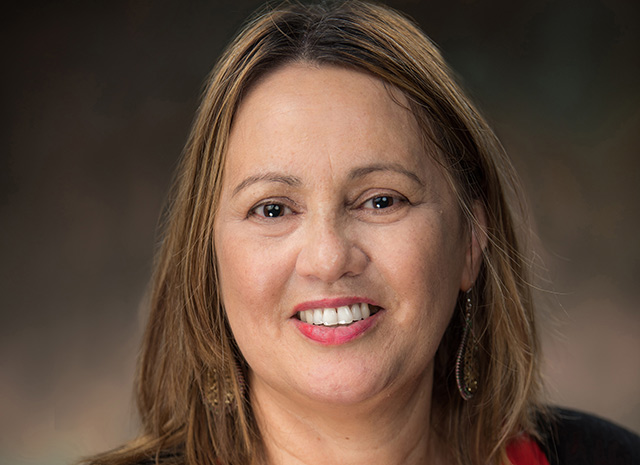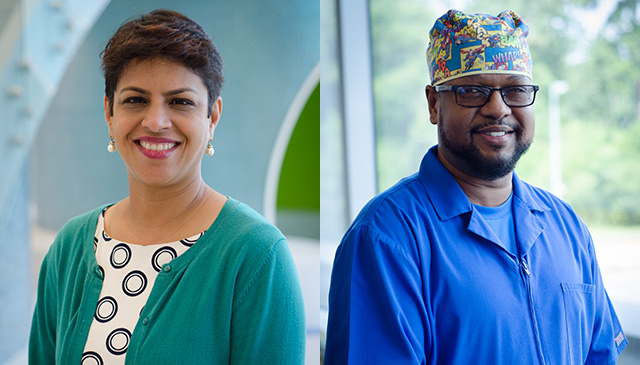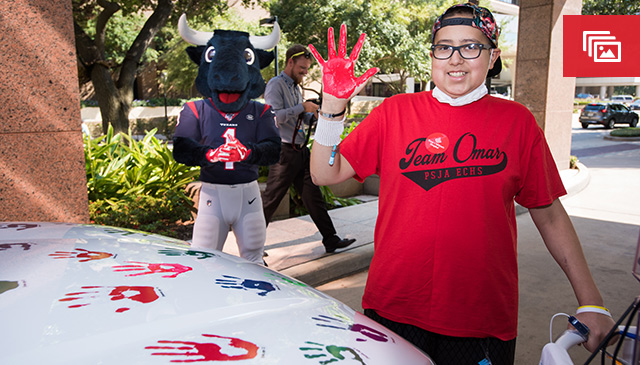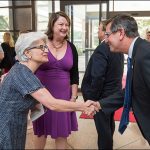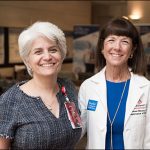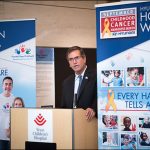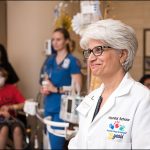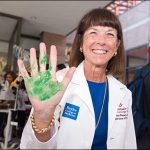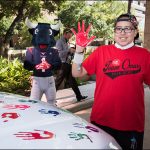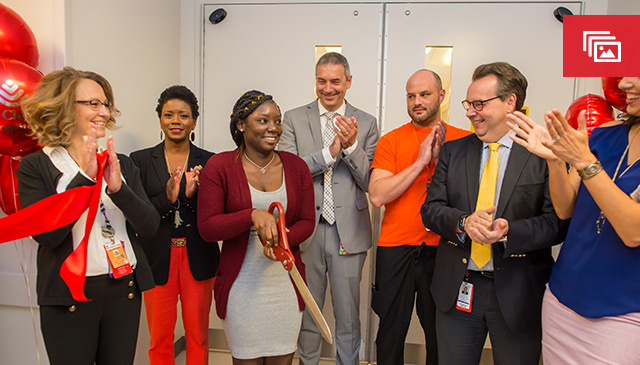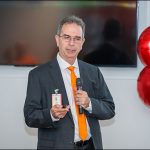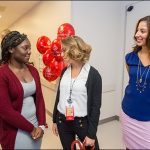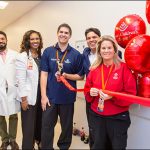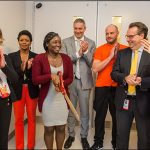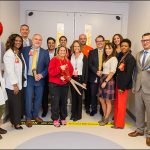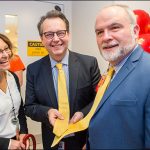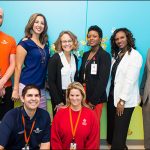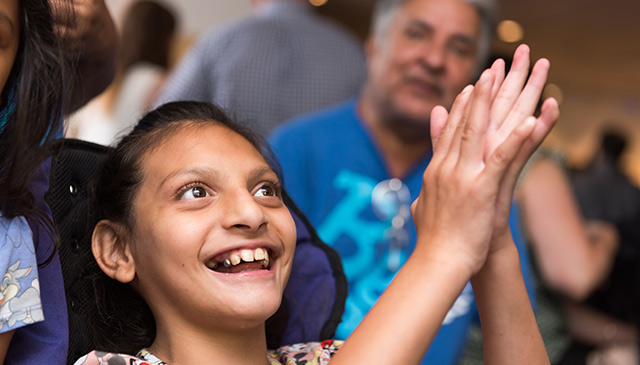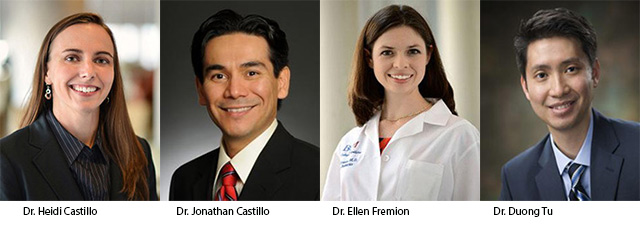
The Meyer Center for Developmental Pediatrics at Texas Children’s Hospital, Baylor College of Medicine and the Spina Bifida Association recently hosted the Houston Spina Bifida Education Day for patients, families and caregivers. Held at Houston Methodist Hospital, the event showcased newly established, evidence-based national guidelines for the care of individuals living with spina bifida. This is the first time the guidelines, written in part by Texas Children’s and Baylor clinicians and researchers, were shared with such a broad audience.
More than 100 people from across Texas and other states as far as Florida and Indiana attended the event. In addition to unveiling the new guidelines, experts from Texas Children’s presented talks covering a range of health issues faced by individuals living with spina bifida from infancy to adulthood. There also were presentations on related topics such as care coordination, emotional wellness, skin, and bowel-management tips specifically geared toward this group of families.
“Usually, clinical care guidelines are widely shared and disseminated among medical practitioners, not so much the lay public, so this conference not only provided professional guidance, but also much needed peer-to-peer advice,” said Dr. Ellen Fremion, a physician in the Spina Bifida Program at Texas Children’s and one of the organizers of the event. “Moreover, the heartfelt appreciation and deep emotional reactions from the families who attended this conference exemplifies how crucial it is to empower patients, families and caregivers with this kind of information, so they are better equipped to care for themselves and their family members.”
Spina bifida (meaning “split bone”) is the most common permanently disabling birth defect seen among newborns in the United States. It is a type of neural tube defect that occurs when a baby’s neural tube fails to develop or close properly. The symptoms of this condition range from mild to severe, depending on where the spinal cord is affected. Myelomeningocele is the most severe form of spina bifida in which parts of the spinal cord and nerves come through the open part of the spine. This leads to several related problems such as loss of feeling in areas below the opening, weakness or paralysis of the feet or legs, problems with bladder and bowel control. Some affected individuals have additional neurological complications, including a buildup of excess fluid around the brain (hydrocephalus) and diverse cognitive challenges. Multiple environmental (such as folic acid deficiency) and genetic factors are thought to cause this complex condition, although the exact causes are still unclear.
The Meyer Center’s Spina Bifida Program at Texas Children’s is a multidisciplinary program that includes several specialty services: neurosurgery, developmental pediatrics, urology, orthopedics, and physical medicine and rehabilitation. Experts from these specialties offer prenatal evaluations and follow patients from in utero to adulthood.
In 2011, Texas Children’s was among the first centers to perform open fetal surgery to treat spina bifida. Using this procedure, the defect in the fetal spine is accessed and repaired through an incision across the mother’s uterus (womb), and has since been the standard of care for spina bifida. In 2014, Texas Children’s Fetal Center pioneered a novel minimally-invasive fetoscopic procedure, in which the spinal defect is repaired through tiny incisions in the uterus using a small camera. This offers the same improved outcomes as the open fetal surgery but comes with additional benefits and reduced health risks.
“Despite recent advances of in utero repair procedures, surgery is not suitable for all patients and cannot be considered a cure,” said Dr. Jonathan Castillo, clinical director of the Spina Bifida Program at Texas Children’s. “Additionally, these surgeries may not reverse all the function or correct all related impairments. Also, these procedures are specific to myelomeningocele and may not help patients with other forms of spina bifida. Therefore, a deeper understanding of the etiology and biology of this condition is crucial to develop better treatment approaches in spina bifida care.”
In addition to providing cutting-edge clinical services, physicians and researchers at Texas Children’s Spina Bifida Program also are engaged in comprehensive, multidisciplinary research initiatives to find newer and safer medical and surgical interventions that can improve the quality of life for these individuals.
In 2014, a multidisciplinary team of experts at Texas Children’s Spina Bifida Program led by Drs. Heidi Castillo, Jonathan Castillo and Duong Tu, received a federal grant from the U.S. Centers for Disease Control and Prevention (CDC) to develop national standards in spina bifida care at the population level. Texas Children’s was the only funded hospital in Texas to be included in this effort, and, along with Baylor, was among the first institutions in the state to participate in the CDC’s National Spina Bifida Registry that collects medical data from this population to improve outcomes.
“Receiving that grant from the CDC and joining the registry gave us an amazing opportunity to participate in a nation-wide effort to develop better outcomes, interventions and standards of care for individuals with spina bifida,” Castillo said. “Since we are one of the major referral sites for spina bifida in the state of Texas, our team provides the entire spectrum of care to pediatric patients – from prenatal diagnosis, surgical interventions and postnatal care until adulthood – for myriad health issues related to spina bifida. This gives our team access to a wide demographic of participants and allows us to conduct unique in-depth studies and comparisons of the outcome measures of current interventions.”
“These studies have led to important findings that are reflected in the recent clinical care guidelines, and have revealed consistent disparities in the outcomes based on patient’s socioeconomic conditions and ethnicity, a novel observation that is currently under further investigation,” Castillo said. “Our team is excited that recently the CDC granted an extension of this grant for five more years, so we can continue to be at the forefront of comprehensive clinical care and research initiatives that will improve the lives of individuals living with spina bifida.”
